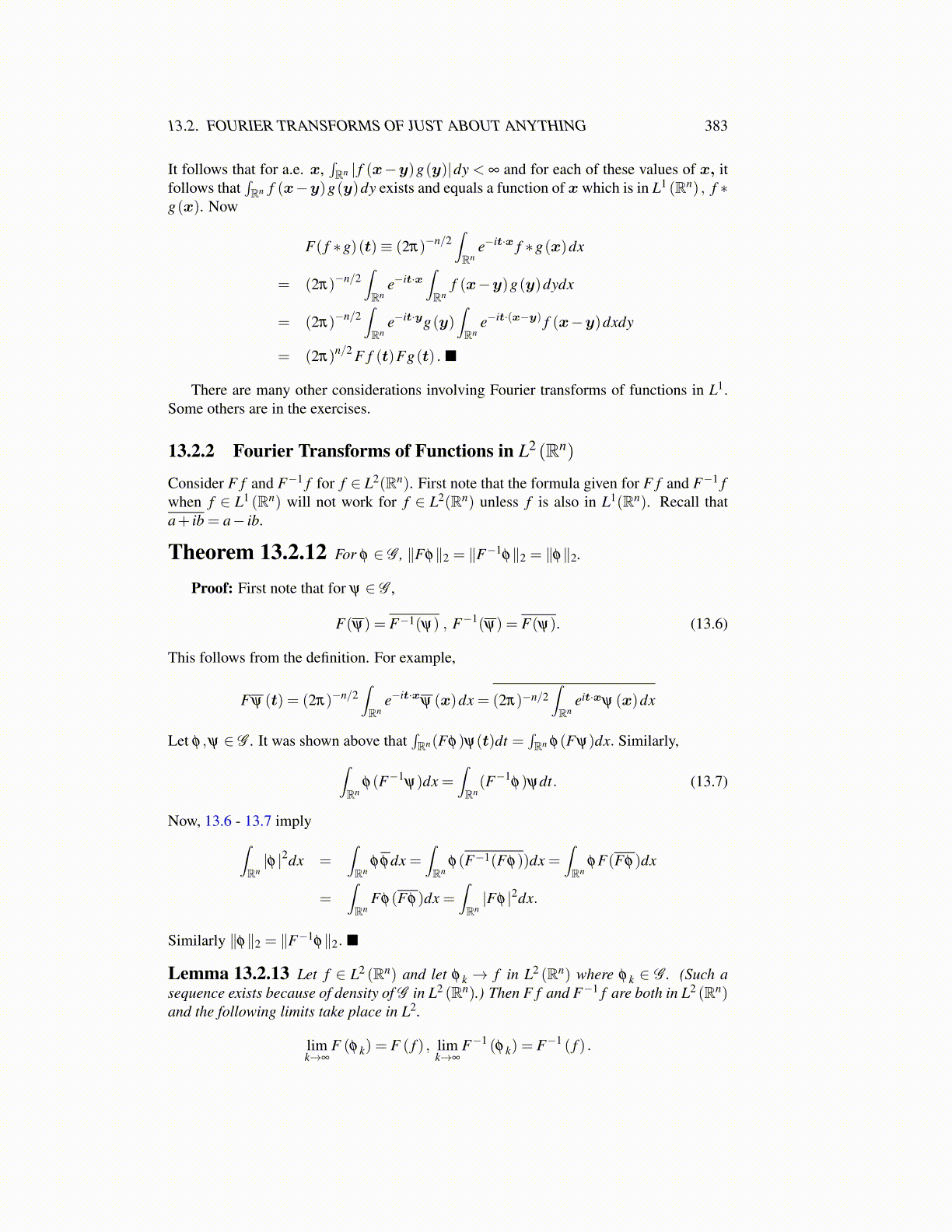
13.2. FOURIER TRANSFORMS OF JUST ABOUT ANYTHING 383
It follows that for a.e. x,∫Rn | f (x−y)g(y)|dy < ∞ and for each of these values of x, it
follows that∫Rn f (x−y)g(y)dy exists and equals a function of x which is in L1 (Rn) , f ∗
g(x). Now
F( f ∗g)(t)≡ (2π)−n/2∫Rn
e−it·x f ∗g(x)dx
= (2π)−n/2∫Rn
e−it·x∫Rn
f (x−y)g(y)dydx
= (2π)−n/2∫Rn
e−it·yg(y)∫Rn
e−it·(x−y) f (x−y)dxdy
= (2π)n/2 F f (t)Fg(t) . ■
There are many other considerations involving Fourier transforms of functions in L1.Some others are in the exercises.
13.2.2 Fourier Transforms of Functions in L2 (Rn)
Consider F f and F−1 f for f ∈ L2(Rn). First note that the formula given for F f and F−1 fwhen f ∈ L1 (Rn) will not work for f ∈ L2(Rn) unless f is also in L1(Rn). Recall thata+ ib = a− ib.
Theorem 13.2.12 For φ ∈ G , ∥Fφ∥2 = ∥F−1φ∥2 = ∥φ∥2.
Proof: First note that for ψ ∈ G ,
F(ψ) = F−1(ψ) , F−1(ψ) = F(ψ). (13.6)
This follows from the definition. For example,
Fψ (t) = (2π)−n/2∫Rn
e−it·xψ (x)dx = (2π)−n/2
∫Rn
eit·xψ (x)dx
Let φ ,ψ ∈ G . It was shown above that∫Rn(Fφ)ψ(t)dt =
∫Rn φ(Fψ)dx. Similarly,∫
Rnφ(F−1
ψ)dx =∫Rn(F−1
φ)ψdt. (13.7)
Now, 13.6 - 13.7 imply∫Rn|φ |2dx =
∫Rn
φφdx =∫Rn
φ(F−1(Fφ))dx =∫Rn
φF(Fφ)dx
=∫Rn
Fφ(Fφ)dx =∫Rn|Fφ |2dx.
Similarly ∥φ∥2 = ∥F−1φ∥2. ■
Lemma 13.2.13 Let f ∈ L2 (Rn) and let φ k → f in L2 (Rn) where φ k ∈ G . (Such asequence exists because of density of G in L2 (Rn).) Then F f and F−1 f are both in L2 (Rn)and the following limits take place in L2.
limk→∞
F (φ k) = F ( f ) , limk→∞
F−1 (φ k) = F−1 ( f ) .